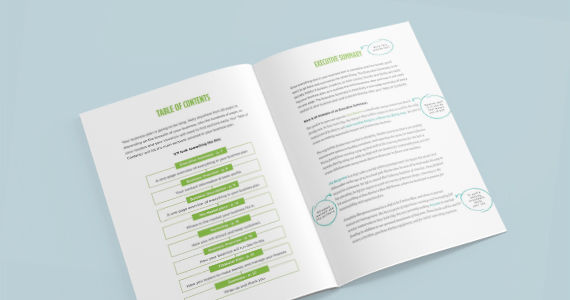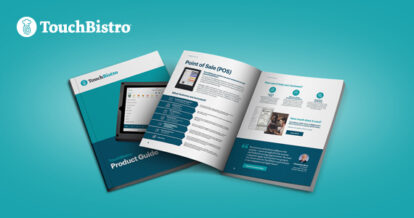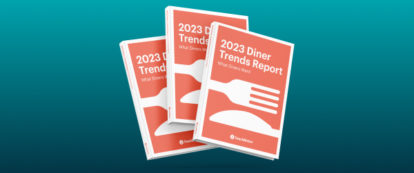Whether you’ve dreamed of opening a restaurant since childhood or have made a recent career switch, your first restaurant is a massive feat that requires a lot of preparation and a solid restaurant business plan. Those days leading up to your grand opening are probably some of the most stressful of your life – but there is a method to the madness that we’re here to tell you about.
While 17% of restaurants fail within their first year, you don’t have to worry – you’ve stumbled upon the secret to success! We’ve compiled a list of common mistakes to avoid so that you can also avoid the ultimate kiss of death – closing your brand spanking new business.

Learn how to draft the best business plan to get financial support.
1) Not Enough Capital
Overspending can sneak up on us when it hurts the most. Without realizing it, you can run through all your startup capital and be left with a half-decorated space. Unforeseen costs are a part of starting any business, but a serious shortfall can put you behind schedule for months as you try to scrounge up the extra cash to make up for the difference. The great news is that this scenario is totally avoidable!
Solution: Diligent, detailed budgeting
Before you execute on anything, it’s crucial to outline all intended expenses and research the common costs associated. Have enough cash reserved for the first 12-16 months for essentials like rent, but also for a lot more uncertainty than you ever anticipated. You can also cut business costs before your restaurant even opens, by establishing strong relationships with food and drink suppliers ahead of time so you’re in a great position to negotiate great deals when you are open.
2) A Complicated Menu
Restaurants cater to hungry customers, and the last thing hungry patrons want is to read through pages upon pages of menu items when their stomachs are grumbling. Yes, your restaurant needs to provide several options to please the tastebuds of many, but it’s even more important to make sure you’re able to consistently deliver on quality so your customers keep coming back. Also, the larger the menu, the longer the customer will take to decide what they want – and that means less table turnover and less profit for you.
Solution: A Smaller – But More Delicious – Menu
Work with your chef to choose items that cater to their strengths and the restaurant’s brand. Smaller menus lead to less overwhelmed customers who will ultimately have a more enjoyable experience.
3) Forgetting About Licenses
Get your signature ready and work on your patience because it’s time for licensing. All businesses must apply for licenses and permits, no matter the industry. The process can be less than straightforward, as licenses and permits vary from industry to industry and state to state. It’s pretty easy to lose yourself in the chaos that is licensing, yet your restaurant has little to no chance of legally remaining open without them. We can also bet you don’t want to pay a $15,000 fine because you forgot to sign a permit for your restaurant in Chicago, for example.
Solution: Do Your Research
Business licenses and permits are required on both federal and state levels – unfortunately, there is no centralized application process! But the U.S. Small Business Administration is a great place to start, and we’ve also put together a detailed list of licenses needed for U.S. restaurants so you’re not totally in the dark.
4) Not Training Your Staff
Your staff can make or break your business. The last thing any new restaurateur wants is to discipline staff because they haven’t been trained properly or high turnover rates because your staff don’t feel they’ve been set up for success. We know that opening a restaurant is stressful – but we also can’t stress enough the importance of a plan to train staff properly before your doors even open.
Solution: A Comprehensive Training Strategy
Think about all the tools you’ll need to provide your staff so they can do their jobs: instructions, lists, presentations, videos, etc. Draft your onboarding plan for new hires well ahead of your grand opening, and run it by training experts to make sure it’s on point. Also take a look at our tips to fight restaurant turnover for more help in retaining staff after they’ve been trained.

Learn how to draft the best business plan to get financial support.
5) Ignoring Data
We’ll let you in on a little secret: success is not a goal. The word “success” is far too broad to be an acceptable goal for any restaurant. For example, we know of a great local coffee shop that handed out free coffee during their opening week for the specific purpose of generating foot traffic and brand awareness. But how do they know whether their tactic worked? Data. The only surefire way to know if you’re headed to success is to set small goals for yourself and measure them by constantly analyzing your data.
Solution: Analyze Your Restaurant Reports and Analytics
We know data can be boring and intimidating, but there’s really no need to stress. Why? Because there’s now technology available to help visualize data in a way that’s totally digestible. This guide will show you how.
6) No Social Media Strategy
First impressions are everything, and choosing a restaurant can be a little like going on a first date. Before a date, you probably Google your date’s name and try to find them on social media so you can discover as much as possible before the actual date. People do the same thing before they choose a restaurant: they check out the restaurant’s online presence, especially their presence on social media. If your restaurant doesn’t exist on social media, particularly Instagram, prior to its opening, you’re missing out on a crucial way to spread the word.
Solution: Draft a Social Media Strategy
Make sure your restaurant has a following on various social media platforms before your doors open. Use Facebook to hype your grand opening through an event page. Post pictures of your delicious food and fabulous space on Instagram ahead of your opening so people know what to expect. Check out our Expert Guide to Restaurant Social Media for all the ways to engage future customers on social.
7) Lack of Concept
In a competitive industry like the restaurant industry, opening a restaurant that offers “good food, drinks, and service” is just not good enough anymore. The restaurant industry is saturated, and customers are looking for establishments that offer a unique experience, not something they can get anywhere. The age of catering to everyone’s interests are over – you need to be clear in what you’re offering customers that your competitors are not, and your patrons should be able to identify what that is as soon as they walk through your door.
Solution: Master Your Elevator Pitch
Your elevator pitch will force you to refine your concept. If you can’t explain what makes your restaurant unique in the time it takes to ride an elevator, you know your brand is convoluted and needs some focus. Your goal as a restaurant owner is to communicate your value proposition to investors, family, friends, and strangers. Once your elevator pitch has been perfected, your concept should have a solid shape for you to start executing on all the elements you’ll need to communicate that concept to customers through your food, decor, and staff.
Opening the doors to your very own restaurant is a monumental accomplishment. When you know what to expect and the mistakes to avoid, you’ll be more likely to feel exhilarated than stressed on opening day and for many days to come.

Learn how to draft the best business plan to get financial support.
Download our free inventory template
Subscribe to the TouchBistro Newsletter







